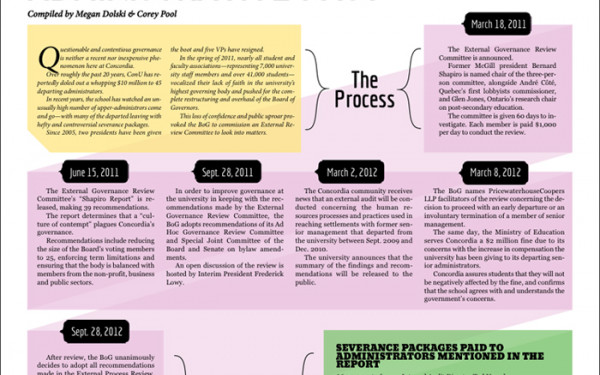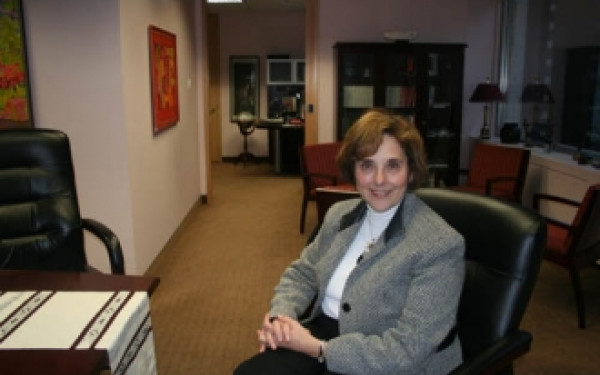A Journey of Soloists and Solitude
The RIDM+ Festival Kicks Off Its Monthly Selection of Documentaries
It’s said that life imitates art—but sometimes, life actually is art.
Around the World in 50 Concerts, which played at Cinema du Parc on Jan. 28, is an intimate, personal exploration of what music means to people.
Director Heddy Honigmann followed the Royal Concertgebouw Orchestra of Amsterdam’s journey around the world in 2013, while they were performing 50 concerts over six continents to honour its 125th anniversary.
Honigmann’s documentary explores the orchestra and its journey, but the film isn’t really about the orchestra as a whole. A sense of loneliness and void is often present in the film, which showcases singled-out musicians and ordinary people who have a story to tell.
Honigmann is a renowned Peruvian-born Dutch director who works both on fiction and documentary films. In 2007, she won the Outstanding Achievement Award at the Hot Docs Canadian International Documentary Festival in Toronto.
Honigmann’s attention to detail and minimalist aesthetic bring forth a sense of cinema vérité in the documentary. We are invited to reflect on the idea that the orchestra’s journey does not belong to its members alone, but also to children in South Africa, a taxi driver in Argentina, a Holocaust survivor in Russia and a flight attendant.
The film begins with a shot of an empty concert hall. Seats and music lecterns are scattered on the stage, a spotlight shining down on them. The room looks huge, majestic and lonely. An off-screen drum begins to rumble.
The camera slowly pans to the left to reveal a lone man hitting his drum. The opening shot sets up the atmosphere of the film in a poetic yet simple manner.
Around the World in 50 Concerts is homage to the little things, to loneliness and to the contrasts of everyday life. The film brings us from big and beautiful to small and homely, poor to rich, playing with polarity.
A melancholic eeriness settles itself in quickly in the film, as it depicts the musicians in their routine after a show. Instruments are packaged in a kind of thermal pajama, while musicians arrive in groups at a hotel, and go down quiet hallways on their own, with the harsh sound of luggage wheels as a soundtrack.The personalities in the film reinforce the idea that a big and prestigious orchestra is indeed filled with regular people who devote their hard work, talent and deep-rooted passion to their instrument.
The film gives several different looks at individual members of the orchestra, most talking about their instrument and favourite symphonies with a sparkle in their stare. However, we also get candid, lovingly awkward moments when some of them reach out to their loved ones at home through a phone call or Skype.
One of the bassoonists sits alone in his quiet hotel room in Buenos Aires and connects on Skype to talk to his wife and kids at home.
“I can see Uruguay from my balcony,” he exclaims. His family doesn’t hear—the connection breaks up. The reality of the scene was just one of many similarly refreshing and honest scenes in the film.
The musicians’ passion isn’t just evident in the one-on-one moments, but also when we get a look at the orchestra’s performances on stage.
The images are powerful: musicians playing with their eyes closed, bodies contorting under the pure joy of a perfectly played part, the French horns waiting for their cue to bring their velvety sound to the partition, the conductor dripping with sweat.
Hearing the orchestra playing in the final performance of the film was nothing short of an emotional roller coaster. Everything that is beautiful about an orchestra reveals itself in that final performance, which that ties the film together, taking every individual parcel and aspect explored throughout the journey.
The glamour in the idea of a famous orchestra is stripped away by the revelatory message the film presents.
The director goes deeper, by examining each human being as a rare breed, a rare story behind a profound love for music.
“I got my share of both Stalin and Hitler,” says an old Russian man in an interview during the film. The man goes on to explain his terrifying and trying past with emotion, but lets us know about his love for music and his love for Gustav Mahler, an Austrian composer and conductor.
Around the World in 50 Concerts is a truly moving portrait of people as they truly are—with pasts, fears and hopes. The movie is one of melancholy, humility, void and simplicity.
The orchestra, in other words, presents the most beautiful example of the idea of the power in numbers. The concept can be terrifying in life, politics, media, but not in music. A lot of passion and humanity individually creates something truly breathtaking when brought together on stage.

1_900_487_90.jpg)
2_900_487_90.jpg)



2_600_375_90_s_c1.jpg)
2_600_375_90_s_c1.jpg)